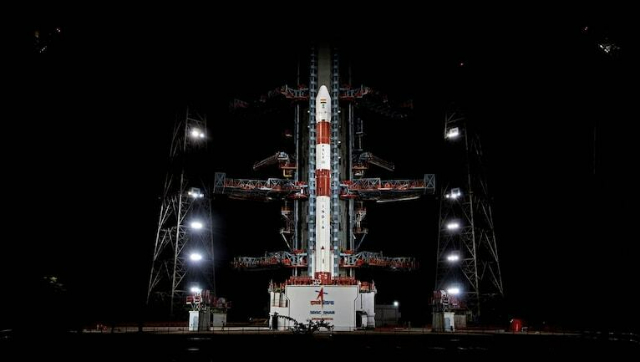FP StaffJun 30, 2022 15:55:47 IST
The Indian Space Research Organisation or ISRO is all set to launch three passenger satellites from Singapore in a big mission on June 30. The PSLV or Polar Satellite Launch Vehicle that ISRO will be using for the launch will lift off at 6:02 Pm from the Second Launch Pad at Satish Dhawan Space Centre in Sriharikota, Andhra Pradesh.
NewSpace India Limited or NSIL is the corporate arm of the Department of Space or DOS and is responsible for establishing India’s space sector as a viable and budget-friendly space logistics organisation. ISRO is launching the mission under NSIL’s agreement with Singapore in what is the second commercial mission for the body. This bodes well for India, as the demand for safe, secure and affordable space travel and logistics solutions go up in the future
The spacecraft, a PSLV-C53 rocket will deploy the three satellites or missions in Low Earth Orbit or LEO, at an altitude of 570 kms, measured from the equator. This is the 55th mission of India’s PSLV and the 15th mission using the PSLV-Core Alone variant. It is the 16th PSLV launch from the second launch pad at Satish Dhawan Space Centre.
The countdown for the launch began on Wednesday, nearly 25 hours before the mission, indicating a healthy system and a launch vehicle on the pad.
The PSLV in its launch fairing is carrying three satellites, the DS-EO satellite and the NeuSAR, Singapore’s first small commercial satellite carrying a SAR payload, which is capable of providing images day and night and under all weather conditions.
Isro in a statement said that the DS-EO weighs about 365 kgs and NeuSAR weighs 155 kgs. While both the spacecraft belong to Singapore, they have been built by Starec Initiative in South Korea. The Third satellite is a 2.8 kg Scoob-1 of Nanyang Technological University (NTU), Singapore.
A major experiment headed onboard is the PSLV Orbital Experimental Module (POEM), which will perform in-orbit scientific experiments using the spent PS4 stage as an orbital platform. It is the first time that the PS4 stage would orbit the earth as a stabilized platform.
POEM carries six payloads including two from Indian Space Start-ups M/s Digantara and M/s Dhruva Space, enabled through IN-SPACe and NSIL
To stabilize the stage after deployment, it will use a dedicated NGC system. The system will derive the power from the solar panels mounted around the PS4 tank and a Li-Ion battery and navigate using four sun sensors, a magnetometer, gyros & NavIC. It carries dedicated control thrusters using Helium gas storage. It is enabled with the telecommand feature.
Source by www.firstpost.com





























